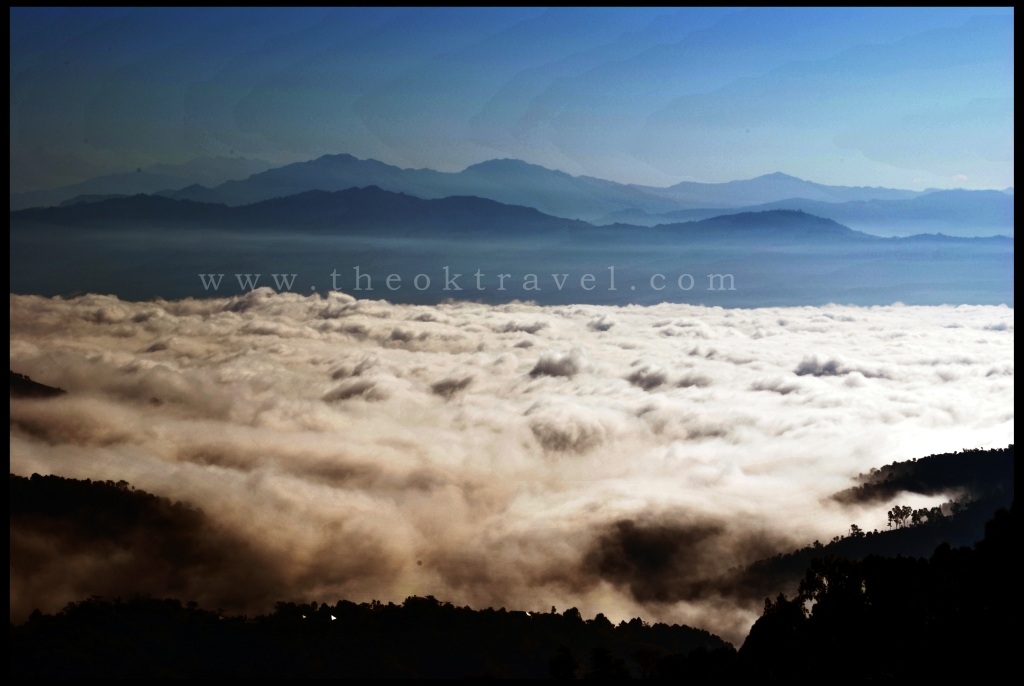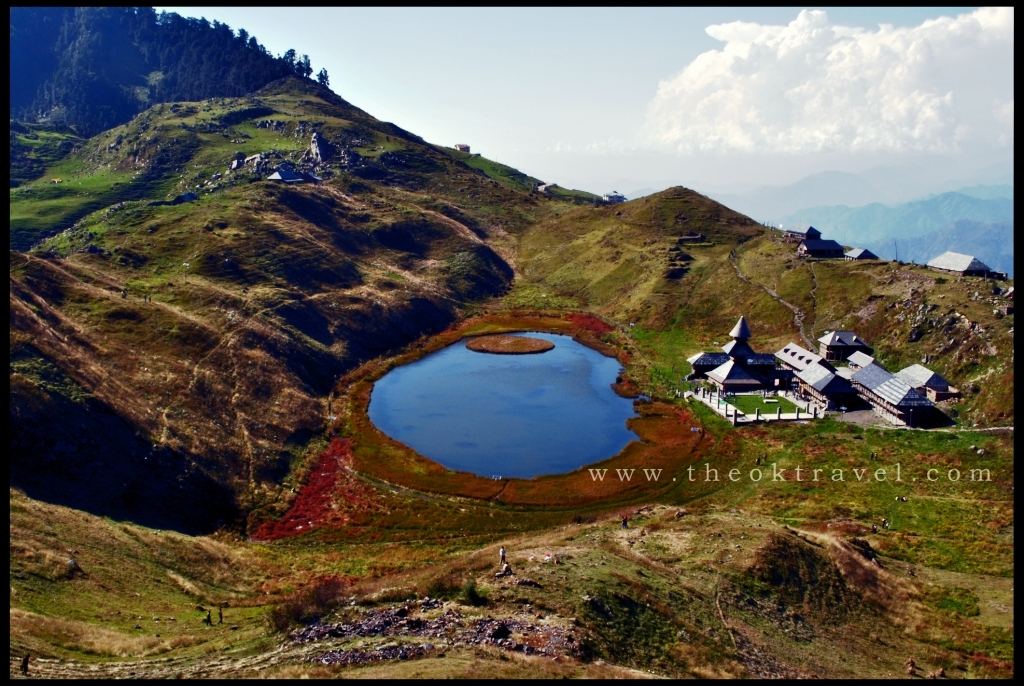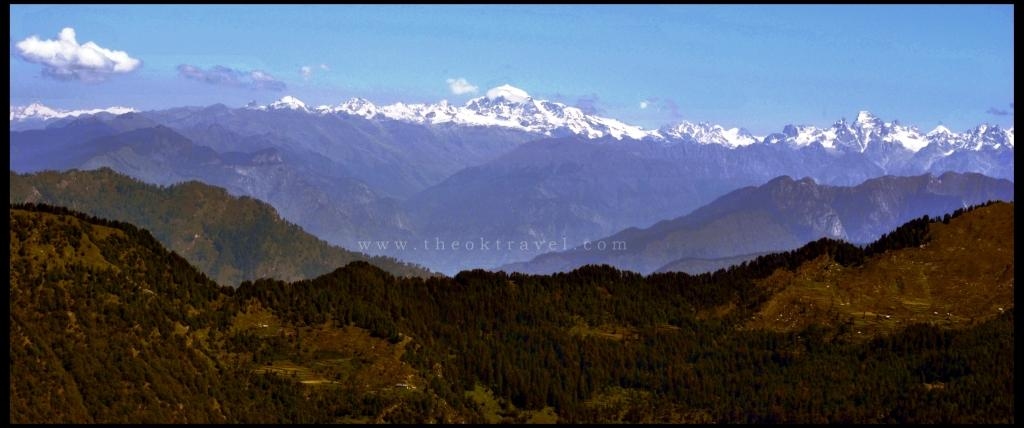The deep blue water of the lake is full of ripples, on surface. The lake seems to be enchanted by the architecture and calmness of a Pagoda styled temple standing by the side, surrounded by the snow peaked mountains.
It is impossible to completely describe the beautiful Parashar Lake and chalk out an image in the mind of the reader; unless you witness this magnificent artwork of nature, in its true colors.
The Pagoda styled temple, dedicated to sage Parashara (lake derives its name from the sage) bestows spiritual calm to the place. There is a small island on the surface of lake which adds to the beauty of this already mesmerizing lake; by leaps and bounds.
Geographical description
The lake is situated in the lap of Himalayas in the Mandi district of Himachal Pradesh. Located at a height of 2,730 m, the lake is at a distance of approximately 50 km from the Mandi town. Sutlej flows to the south.
What attracts tourists?
Parashar Lake is one of the most favorite destinations of the tourists from all over the world. The presence of exquisite valleys, green pastures, gushing springs and majestic wildlife attracts them from different corners of the world.
The lake is definitely the most magnetic feature for the tourists along with the ancient temple of sage Parashara. Thousands of pilgrims visit this holy place throughout the year.
Tourists can enjoy trekking, nature walks, sight-seeing and other nature sports.



Cultural & religious significance
The annual fair held in the region is the other point of attraction for the pilgrims, where villagers from nearby places carry their deities to pay obeisance to sage Parashara.
There stands an ancient Deodar tree in the vicinity of the Parashar Lake. The legend says sage Parashara rested his back against this tree while mediating continuously for a long duration.
The other places worth visiting around the Parashar Lake are Pandoh, Shikari Devi Temple, Barot, Chidi and Kamru-Nag Lake.
There is another temple in the vicinity of the temples, which belongs to the wife of Parashar Rishi. It is believed that the saint and his wife had a disagreement and she moved away from the main temple premises. A short half an hour walk from the temple takes you to the Temple of Rishi’s Wife, which is known as ‘Majholi Mata Temple’.
Barbed fencing guards the lake and feeding the fish is strictly prohibited at the lake. The gate opens only for the Temple Priest or for the cleaning of the lake.
The most interesting aspect of the lake is the revolving mass of grass in the lake. It revolves with the flow of the air and on a lucky day, one can witness this soil-grass mass at different positions suspended in the lake. The winter view of the lake is mesmerizing.
Flora and fauna
Diverse varieties of flora and fauna are found in the region around the lake. Various medicinal plants and Ban Oak, Conifers, Alpine and deciduous trees are found in the region surrounding the lake.
Fauna includes Himalayan Black Bear, Musk Deer, Common Langur, Indian Porcupine etc.
The best time to visit the lake
The weather remains pleasant throughout the year but tourists should plan their itinerary in the duration of August to October. In the winter season, snowfall often leads to closing of the road and then one has to walk from Bagi Pul to reach the lake, which is a good 5 kilometer hike amidst thick forests.
Where to stay?
- Forest Department Rest House
- PWD Guest House
- One can even stay at the wooden rooms adjacent to temples, but that could be damn cold. (Free Of Cost)
One must confirm the booking from the Mandi Offices before heading towards the lake. The winter view of the lake is mesmerizing however; the road gets blocked near the Bagi Bridge. There are two alternate routes to reach Lake Prasahar, one is from Kullu via Bajaura which is a 34 kilometer ride that takes almost two hours to reach Parashar Lake.
The other route leads you to Barot, Pandoh that starts from the IIT Mandi at Kamand Village. Kamand Village is arguably the coldest village enroute Lake Parahsar. The road to Parahsar via Kamand Barot takes you through some of the most beautiful villages in the Uttarasal and Snor regions of district Mandi.
River Uhl coming from Thamsar Pass via Barot emerges here near the IIT Mandi main complex at Kamand.
Reaching Parashar Lake
Reaching Mandi is quite easy. Either get a flight to Kullu or simply board a luxury bus to Mandi from Delhi, Dharamshala, or Pathankot.
Once you have reached Mandi, you have two options, either hop on a government bus or hire a taxi from Mandi town. The first bus from Mandi to Parashar starts between 6-7 A.M. in the morning. The buses are not that frequent from Mandi to Parashar.
If you are coming from Bajaura (Kullu Side), you have to rely on a private cab or your own vehicle.
The road is narrow and road condition is somewhere between average and poor. During the rainy season, the road condition deteriorates badly. One can trek down from the lake and reach Pandoh Town, which is famous for the dam and an ancient Shiva Temple. The Shiv Badar temple at Pandoh is an ancient temple and the name Badar is the collective name of the Pandoh Region.

[…] How to Reach Parashar Lake? […]